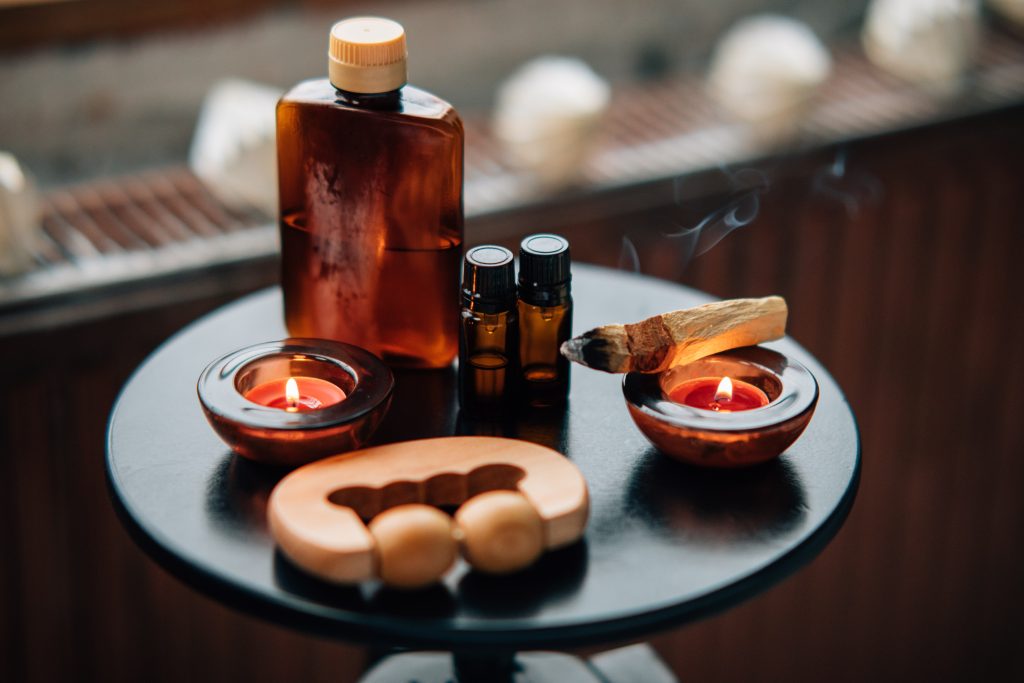Discover how at-home massage techniques and tools can effectively alleviate back pain.
Can At-Home Massage Techniques and Tools Provide Back Pain Relief?

If you’ve ever experienced back pain, you know just how debilitating it can be. It can make even the simplest tasks feel like an uphill battle. But fear not, because relief may be just a massage away. Yes, that’s right, massage therapy could be the key to easing your back pain and getting you back on your feet. And the best part? You can do it all from the comfort of your own home. In this article, we’ll delve into the world of at-home massage techniques and tools and explore how they can provide back pain relief.
Understanding the Causes of Back Pain
Before we dive into the magical world of massage, let’s take a moment to understand the root causes of back pain. It’s important to know what’s going on beneath the surface before we can effectively address the issue.
Back pain is a common ailment that affects millions of people worldwide. It can range from a dull, nagging ache to a sharp, debilitating pain that hinders everyday activities. To effectively manage and treat back pain, it is crucial to understand its underlying causes.
The Role of Muscles and Nerves in Back Pain
First things first, let’s talk about muscles and nerves. These two troublemakers often team up to cause us pain and discomfort. When our muscles become tight and tense, they can put pressure on the nerves in our back, leading to that oh-so-unpleasant sensation we know as back pain.
Our muscles play a vital role in supporting the spine and maintaining proper posture. However, factors such as stress, poor ergonomics, and lack of exercise can cause our muscles to become tight and imbalanced. This imbalance puts excessive strain on the spine, leading to pain and discomfort.
But why do our muscles get all riled up in the first place? Well, it could be due to a number of factors, which brings us to our next point.
Common Lifestyle Factors Contributing to Back Pain
Our modern lifestyles can be a real pain in the back. Literally. Activities like sitting for long periods, poor posture, and lifting heavy objects can all take a toll on our backs and leave us feeling sore and achy.
Sitting for extended periods, especially in a slouched position, puts excessive pressure on the spinal discs and can lead to muscle imbalances. Similarly, lifting heavy objects with improper form can strain the muscles and ligaments in the back, causing pain and injury.
Furthermore, stress and anxiety can contribute to back pain. When we are stressed, our muscles tend to tighten up, leading to increased tension in the back. This can exacerbate existing back pain or even trigger it in some cases.
But fear not, because relief is within reach. It’s time to unleash the power of massage therapy.
Massage therapy has been used for centuries to alleviate back pain and promote overall well-being. Through various techniques, such as deep tissue massage, Swedish massage, and trigger point therapy, massage therapists can target the muscles and soft tissues in the back, releasing tension and promoting relaxation.
Regular massage sessions not only provide immediate relief from back pain but also help prevent future episodes by improving muscle flexibility, reducing muscle imbalances, and promoting better posture.
In addition to massage therapy, incorporating other holistic approaches such as stretching exercises, yoga, and ergonomic adjustments in daily activities can further enhance the effectiveness of back pain management.
So, if you’re tired of living with back pain, it’s time to take action. By understanding the causes of back pain and exploring effective treatment options like massage therapy, you can regain control of your life and bid farewell to that nagging ache in your back.
The Science Behind Massage Therapy
Massage therapy isn’t just some New Age mumbo jumbo. Oh no, it’s backed by science. In fact, research has shown that massage can have a range of benefits, including reducing pain and promoting relaxation.
But what exactly happens when you receive a massage? Let’s dive into the science behind this therapeutic practice.
How Massage Therapy Works
So how exactly does massage therapy work its magic? Well, when you receive a massage, it helps to increase blood flow to the muscles, which can help to relax them and reduce any inflammation that may be causing your back pain.
But it doesn’t stop there. Massage can also stimulate the release of endorphins, those feel-good chemicals that help to alleviate pain and boost your mood. These endorphins act as natural painkillers, reducing discomfort and promoting a sense of well-being.
Moreover, massage therapy can also improve lymphatic circulation, which plays a crucial role in removing waste products and toxins from the body. By enhancing lymphatic flow, massage helps to detoxify the muscles and promote overall health.
Benefits of Massage for Back Pain
When it comes to back pain, massage therapy can be a game-changer. Not only can it help to relieve muscle tension and reduce pain, but it can also improve flexibility and range of motion, allowing you to move more freely without discomfort.
Regular massage sessions can also prevent future episodes of back pain by addressing underlying issues such as poor posture, muscle imbalances, and stress-induced tension. By targeting these root causes, massage therapy provides long-term relief and promotes a healthier back.
But enough talk, let’s get hands-on with some at-home massage techniques. Whether you’re dealing with acute or chronic back pain, these self-massage techniques can help you find relief in the comfort of your own home.
Remember, though, while at-home massage techniques can be beneficial, it’s always a good idea to consult with a licensed massage therapist for a more comprehensive and personalized treatment plan.
Exploring At-Home Massage Techniques
Think you need a fancy massage table and a team of trained professionals to get the benefits of massage therapy? Think again. With a few simple techniques, you can be your own massage therapist and wave goodbye to that pesky back pain.
Massage therapy has been used for centuries to promote relaxation, relieve muscle tension, and improve overall well-being. While professional massages can be expensive and time-consuming, at-home massage techniques offer a convenient and cost-effective alternative. By learning some basic and advanced techniques, you can effectively address different levels of pain and discomfort in the comfort of your own home.
Basic Techniques for Self-Massage
Ready to get those hands moving? Let’s start with some basic self-massage techniques that you can do anytime, anywhere. One of the easiest techniques is using your hands to apply gentle pressure to the affected area, gradually increasing the intensity as needed. This technique, known as effleurage, helps to warm up the muscles and prepare them for deeper work.
Another simple technique is kneading your muscles with your fingertips. This technique, called petrissage, involves gently squeezing and lifting the muscles to improve blood circulation and release tension. You can also use circular motions with your fingertips to target specific areas, such as the neck or shoulders, where tension commonly builds up.
For those hard-to-reach areas, like the lower back, you can use a tennis ball or a foam roller to apply pressure and release tight knots. Simply place the ball or roller against a wall or the floor and lean your body weight into it, allowing the pressure to work its magic.
Advanced Techniques for More Severe Pain
If you’re dealing with more severe pain, don’t worry, we’ve got you covered. Advanced techniques such as trigger point therapy and myofascial release can help to release tight knots and promote deep relaxation. These techniques target specific trigger points, which are hyperirritable spots in the muscle tissue that can refer pain to other areas of the body.
Trigger point therapy involves applying direct pressure to these trigger points using your fingertips or a massage tool. By applying sustained pressure, you can help release the tension and alleviate pain. Myofascial release, on the other hand, focuses on releasing the fascia, a connective tissue that surrounds and supports the muscles. This technique involves applying gentle, sustained pressure to the affected area, allowing the fascia to stretch and release tension.
When performing advanced techniques, it’s important to listen to your body and adjust the pressure accordingly. Start with lighter pressure and gradually increase it as your muscles begin to relax. Remember to breathe deeply and relax throughout the process, allowing the massage to work its magic on both your body and mind.
With these at-home massage techniques, you can take control of your own well-being and find relief from muscle pain and tension. Whether you’re dealing with minor discomfort or chronic pain, regular self-massage can be a valuable addition to your self-care routine. So, roll up your sleeves, get those hands moving, and discover the healing power of touch.
Tools to Enhance Your At-Home Massage
While your hands are undoubtedly skilled, sometimes a little extra help is needed to really get to the root of the problem. That’s where massage tools come in. These nifty gadgets are designed to help you target specific areas and provide even greater relief. Let’s check out some of the most popular options.

Overview of Massage Tools
From handheld massagers to foam rollers, the world of massage tools is vast and varied. Each tool offers its own unique benefits, so it’s important to choose one that suits your needs and preferences.
Choosing the Right Massage Tool for Your Needs
When selecting a massage tool, there are a few things to consider. Think about the type of massage you enjoy, the areas you want to target, and any specific features you’re looking for, such as heat or vibration. It’s all about finding the tool that makes your muscles sing with joy.
Safety Precautions for At-Home Massage
While at-home massage can be a game-changer for back pain relief, it’s important to keep safety in mind. Here are a few tips to ensure you get the most out of your massage while avoiding any potential pitfalls.
When to Avoid Self-Massage
While self-massage can provide amazing benefits, there are times when it’s best to put those hands on hold. If you have an acute injury, open wounds, or a medical condition that could be worsened by massage, it’s best to skip it and consult with a healthcare professional instead.
Tips for Safe and Effective Massage at Home
Now that we’ve covered when to avoid self-massage, let’s focus on how to make your at-home massage a success. Start by creating a calm and relaxing environment, free from distractions. Use light to moderate pressure during your massage and be sure to listen to your body. If something doesn’t feel right, ease off a little or try a different technique.
And don’t forget to stay hydrated and take breaks as needed. Massage is not a marathon, it’s a journey to relaxation and pain relief.
The Final Touch: Back Pain Relief
Phew, we’ve covered a lot of ground here, but we’re almost at the finish line. By now, you should be armed with the knowledge and techniques you need to tackle that stubborn back pain. Whether you choose basic self-massage or opt for the extra assistance of massage tools, the journey to relief starts with you.
So go ahead, give it a try. What do you have to lose, besides the pain? Say goodbye to back pain and hello to a happier, healthier you. Your back will thank you.



